![From the EAL publication "Pastimes" from 1972. The centerfold introducing the L-1011 to the EAL fleet. Notice the First Class (red seat) arrangement..nice. Image from David Capodilupo. [CLICK FOR LARGER]](https://www.airlinereporter.com/wp-content/uploads/2013/01/L1011-640x441.jpg)
From the EAL publication “Pastimes” from 1972. The centerfold introducing the L-1011 to the EAL fleet. Image from David Capodilupo. [CLICK FOR LARGER]
Eastern was one of two co-launch customers for the L1011 (TWA was the second), which started service in 1972 with the airline.

Eastern Air Lines Lockheed L1011. Photo by Bob Garrard.
The spacious layout, the luxurious amenities — the way flying used to be right? Also remember that there were fewer flight options, limited in-flight entertainment, louder, less safe and cost much more. Yes, things have changed, but I think mostly for the good. Doesn’t mean I don’t miss the L1011 and EAL.
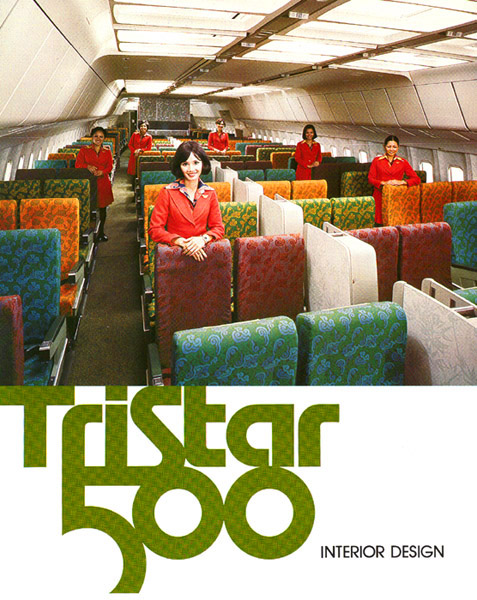
Image from Chris Sloan / Airchive.com.
The image above is from the L1011 Sales Brochure, this shows a more cramped 2-4-3 layout for economy (the cut-away above shows a 2-4-2). Check out those center dividers and the lack of center overhead bins.
SOME ADDITIONAL L1011 GOODIES:
* Sales brochure for the Lockheed L1011 in 1979 via Airchive.com
* More classic Eastern Air Lines L1011 Photos by Bob Garrard
 |
This story written by…David Parker Brown, Editor & Founder.
David started AirlineReporter.com in the summer of 2008, but has had a passion for aviation since he was a kid. Born and raised in the Seattle area (where he is currently based) has surely had an influence and he couldn’t imagine living anywhere else in the world.
@AirlineReporter | Flickr | YouTube |
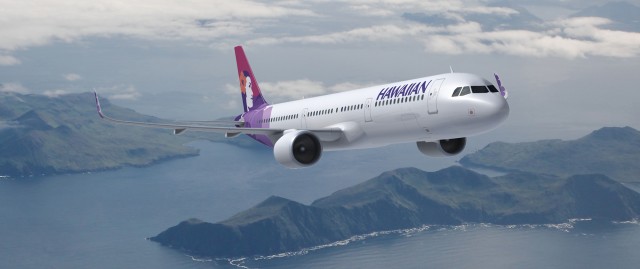
Mock up of what Hawaiian Airlines Airbus A321neo will look like. Aircraft image from Airbus. Can you tell where the background image was taken (it is a real photograph by Brandon Farris).
On Monday Hawaiian Airlines made a big announcement that it was ordering the Airbus A321neo to add to its expanding fleet.
The order is for 16 A321neo’s along with the rights to purchase up to nine more of the type. The carrier currently has 43 aircraft that is a mix of Boeing 767-300ER that it primarily uses on its west coast operations from the islands, the A330-200 used on international long haul ops and the Boeing 717 that it uses for inter-island hopping.
“Everyone at Hawaiian wants us to keep our position as the market leader in service quality, cost efficiency and choice of destinations. Ordering the A321neo will secure this legacy on routes to the U.S. West Coast beyond the middle of this decade,” said Mark Dunkerley, president and CEO of Hawaiian Airlines. “The A321neo will be the most fuel-efficient aircraft of its type after its introduction in 2016. With its slightly smaller size we’ll be able to open new markets that are not viable for wide-body service, while also being able to augment service on existing routes to the West Coast of North America.”
At 146-feet-long, the A321neo will seat approximately 190 passengers in a two-class configuration (First and Coach) and has a range of 3,650 nautical miles. Terms of the agreement were not disclosed, however, the aircraft have a total list-price value of approximately $2.8 billion if all of the purchase rights are exercised.
The new acquisitions are also contingent upon Hawaiian signing new agreements with its pilots and flight attendant unions covering operation of the new aircraft type. If new agreements are reached, the fleet expansion is expected to generate roughly 1,000 additional jobs at the airline.
“This is a significant investment in the future of both Hawaiian and Hawaii. Our tourism-based economy and local employment will benefit as we continue our strategy of diversifying our business while improving the efficiency of our operation,” Dunkerley commented.
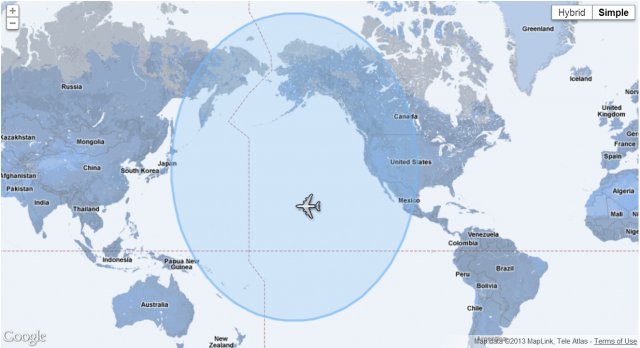
This is the current range of the A321 from Hawaii. The A321NEO will add an additional 450 miles.
“We have come to think of Hawaiian Airlines as ‘ohana’ (family) and are very pleased to add yet another branch to our tree with this pending expansion of the Hawaiian Airbus fleet,” said John Leahy, Airbus chief operating officer, customers. “Hawaiian has gotten great results with their A330s.”
There is much speculation from analyst and fans where the aircraft will be flown, whether they will take over the current 767 west coast routes or lead to expansion for Hawaiian to operate to new west coast operations. By the time these aircraft join the fleet their 767’s will be around 18 to 20 years old for the leased ones and 30 years with the four that it purchased from Delta in 2005.
Other ideas are this purchase is to keep the A350 and A330-200s free to continue what has been a rather aggressive expansion from the quite airlines on the islands.
 |
This story written by…Brandon Farris, Correspondent. Brandon is an avid aviation geek based in Seattle. He got started in Photography and Reporting back in 2010. He loves to travel where ever he has to to cover the story and try to get the best darn shot possible.
@BrandonsBlog | RightStuffPhotography | Flickr |
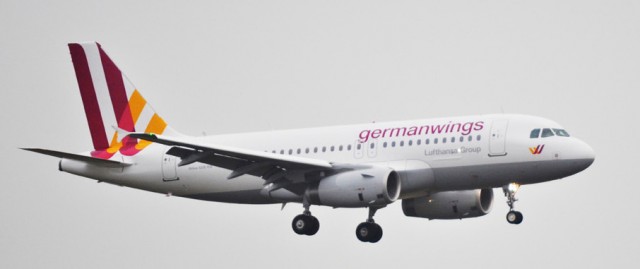
Germanwings new livery on an Airbus A319 (D-AGWT). Photo from Germanwings.
Behold Germanwing’s new livery which was recently painted on an Airbus A319 (D-AGWT). The change is more than just a new design; they are altering the way that they do business as well.
Germanwings was founded in 1997 as a German based low-cost airline and in January 2009, they became a subsidiary of Lufthansa Airlines. Germanwings currently operates a fleet of almost 40 Airbus A319 aircraft, but it will soon grow.
Lufthansa will start moving aircraft to the “new” airline and Germanwings fleet will grow to about 90. Germanwings is set to take over all of Lufthansa’s domestic and European, non-hub flights.
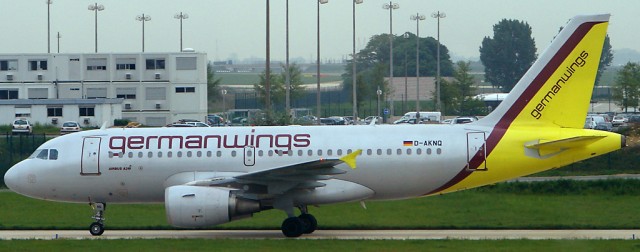
Germanwings previous livery on an Airbus A319. Photo by Jeremy Dwyer-Lindgren.
Christoph Franz, Chairman of the Executive Board of Deutsche Lufthansa AG stated: ’œWith the ’˜new Germanwings’ we are going on the offensive in respect of point-to-point connections. We have developed a convincing array of products and have many years of experience in the low-cost and premium segments. We will combine elements of both in the ’˜new Germanwings’ and set new standards in our home market of Europe. This will enable us to operate profitably away from our large hubs again while also exciting our passengers with a modern offering.’
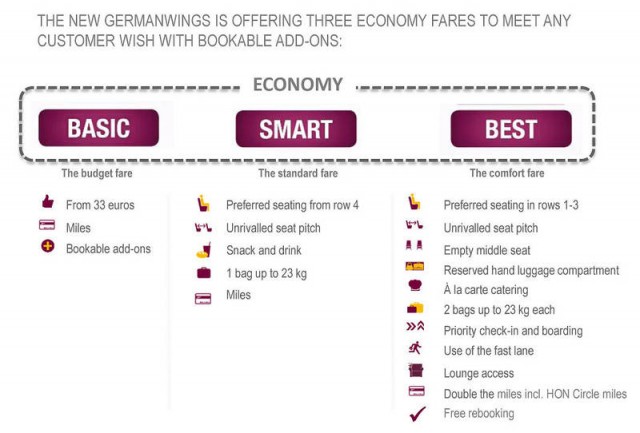
Germanwings new pricing structure is a bit easier to follow than other low cost airlines. Image from Germanwings.
On July 1, 2013, the official “new Germanwings” will start operations with only economy seating, but with three types of service (see the chart above).
Lufthansa’s website states, “True to the motto ’œReasonably priced but not cheap’, the airline’s employees will focus all the more on meeting customer’s wishes to the fullest in the future. Passengers will be able to choose from three basic Economy Class modules for this ’“ Best, Smart and Basic.”
The more you pay; the better service you get. Not too difficult.
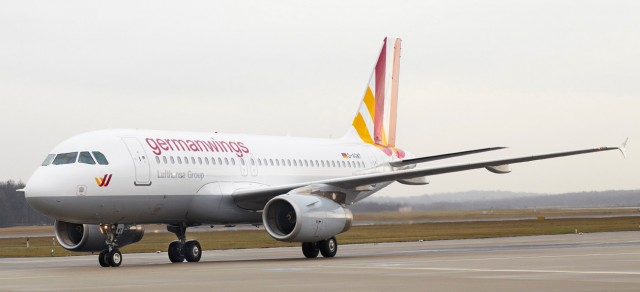
What do you think of Germanwings new livery? Photo from Germanwings.
The new livery is a pretty radical departure from the previous one. It moves to a more conservative look, that mirrors Lufthansa.
As far as European-white liveries, I think this one does quite well. The swooping, colorful “W” on the tail goes well with the titles on the side. I only wish that color would have been added to the winglets, but maybe that would have been a bit too much. Lufthansa has probably one of the most simple, yet regal liveries and probably wanted Germanwings to have a bit more of a “fun” or “cost effective” look, while steering clear of the Spirit Airlines or Wizz Air look.
 |
This story written by…David Parker Brown, Editor & Founder.
David started AirlineReporter.com in the summer of 2008, but has had a passion for aviation since he was a kid. Born and raised in the Seattle area (where he is currently based) has surely had an influence and he couldn’t imagine living anywhere else in the world.
@AirlineReporter | Flickr | YouTube |

I was able to meet with the Future of Flight today and we are happy to announce that the dates (yes plural) for Aviation Geek Fest 2013 (#AGF13) have been decided: Saturday February 16th AND Sunday February 17th 2013.
It is President’s Day weekend, so probably many of you also will have Monday the 18th off. There is currently nothing planned for AGF13 for that Monday, but there is plenty of other AvGeek goodness to enjoy in Seattle.
We are not able to share too many more details other than the dates right now, but rest assured, this event will be epic and well worth you making an effort to join us. We are planning to have activities both up north in Everett and down south in the Renton area.
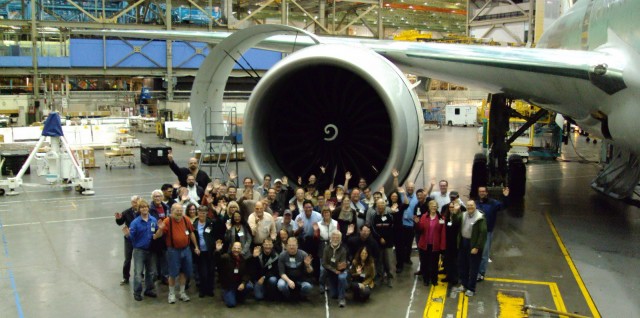
The Aviation Geek Fest 2010 peeps pose in front of a GE90 engine on a Boeing 777. Photo from Boeing.
I can tell you that this year’s event will be bigger and better than any previous. It will be like combining the past three AGF’s into one, then add a little magic and finally some AvGeekdom and then you have #AGF13.
As in last year, we will most likely charge for tickets, which will be going on sale over the next few weeks. Do not worry we will give you plenty of heads up (sign up for the email list).
BONUS: Check out what went down in previous years – AGF09, AGF10, AGF12
Should you book your airline tickets now? Yes please do. We have people from all over the US join that joined us last year and we are hoping we will have more (even from around the world) this year. It will be worth it!
Ask any questions in the comments, but I do not have too much more to give as of now. If you have not done so already, please make sure you join the Aviation Geek Fest mailing list to get all the up-to-date details.
I hope to see you there!

Photo of Paine Field taken just a few days ago. Many Boeing planes might have been delivered in 2012, but there are still many parked at KPAE. BTW, looking at this photo you have brand new Boeing planes and Mount Rainier in the background. I love living in Seattle.
Boeing had a pretty darn good 2012. They received 1,203 net commercial orders and had 601 deliveries. One of the best successes for Boeing was the 737 and the new more efficient MAX model (still not keen on that name).
Of the 1,203 net orders in 2012, 1,124 of those were for the 737 and 914 of those were for the MAX. Not to mention that the 737 celebrated its 10,000th order earlier in 2012.
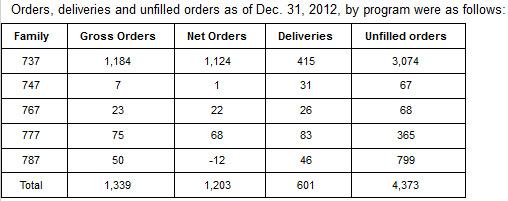
Boeing orders and deliveries for 2012. Chart from Boeing.
Boeing President & CEO Ray Conner sent a letter to all Boeing Commercial Airplanes employees to recognize their ’˜incredible’ contributions to the company’s success in 2012. I figured it was something worth sharing:
As we kick off a new year, I’d like to recognize your incredible accomplishments in 2012. You’ve demonstrated through your hard work and dedication that you are the best aerospace team in the world.
Thanks to your efforts, we ended the year with 1,203 net orders ’“ the second-largest total in company history. We delivered 601 airplanes ’“ the most since 1999 ’“ and we continued to raise the bar across all programs. We also advanced our services strategy and increased the breadth of our offerings to customers.
On the 737 program, we booked 1,124 net orders ’“ unprecedented for any of our models in a single year ’“ and celebrated the program’s 10,000th order. The Next-Generation 737 set a record for deliveries ’“ 415 in the span of a year. And the 737 MAX logged 914 net orders, pushing us past the 1,000 order mark.
Our strong performance extended to the twin-aisle programs as well. The 787 program closed out the year with 46 deliveries ’“ including 11 Dreamliners in December alone. In all, we have delivered 49 787s to eight customers. The 777 program made a milestone 1,000th delivery, the 747-8 Intercontinental and Freighter continued to receive positive reviews for performance from customers, and the 767 team helped the KC-46 Tanker program meet or surpass its development milestones for the year.
Not only that, in December we delivered 15 airplanes in a 24-hour period from Everett, Renton and Charleston combined ’“ the most in one day since 1998 ’“ highlighting our collective strength as one team. We achieved all this while stepping up production 26 percent over the course of several rate increases throughout the year. This is outstanding work by an amazing team and I know our customers appreciate it.
Looking forward, our customers continue to face an increasingly tough business environment, making it more important than ever that they acquire more-efficient products and services at lower costs. To help meet demand, we’ll continue to focus on raising production rates and continuously improve how we build airplanes. We’ll transition the 787-9 into production and flight test and continue working toward the 787-10X and the 777X, guided by the needs of our customers.
On our development programs, we will be more disciplined as we implement lessons learned from the past. We’ll think early in the process about how we can better support our customers throughout the product lifecycle, while ensuring our own profitability.
With a backlog of 4,373 unfilled orders ’“ the highest in our history ’“ we have huge opportunity ahead of us if we execute on our commitments. We know we have the right products and we’ve proven we know how to increase rates. I know we have the right team to make it possible.
It takes our entire team to be successful ’“ everyone is an important player. That means we need to look out for one another and be relentless about achieving our goal for a safe work environment with zero injuries. It also means having a culture where we treat our teammates with the highest level of integrity and respect. As we all sign Boeing’s Code of Conduct this month, we should think about the kind of culture we want to have ’“ one that makes us proud to work here. Let’s make it happen.
Once again, I’d like to thank you for making last year so successful. I look forward to the year ahead.
Ray
 |
This story written by…David Parker Brown, Editor & Founder.
David started AirlineReporter.com in the summer of 2008, but has had a passion for aviation since he was a kid. Born and raised in the Seattle area (where he is currently based) has surely had an influence and he couldn’t imagine living anywhere else in the world.
@AirlineReporter | Flickr | YouTube |
![From the EAL publication "Pastimes" from 1972. The centerfold introducing the L-1011 to the EAL fleet. Notice the First Class (red seat) arrangement..nice. Image from David Capodilupo. [CLICK FOR LARGER]](https://www.airlinereporter.com/wp-content/uploads/2013/01/L1011-640x441.jpg)













